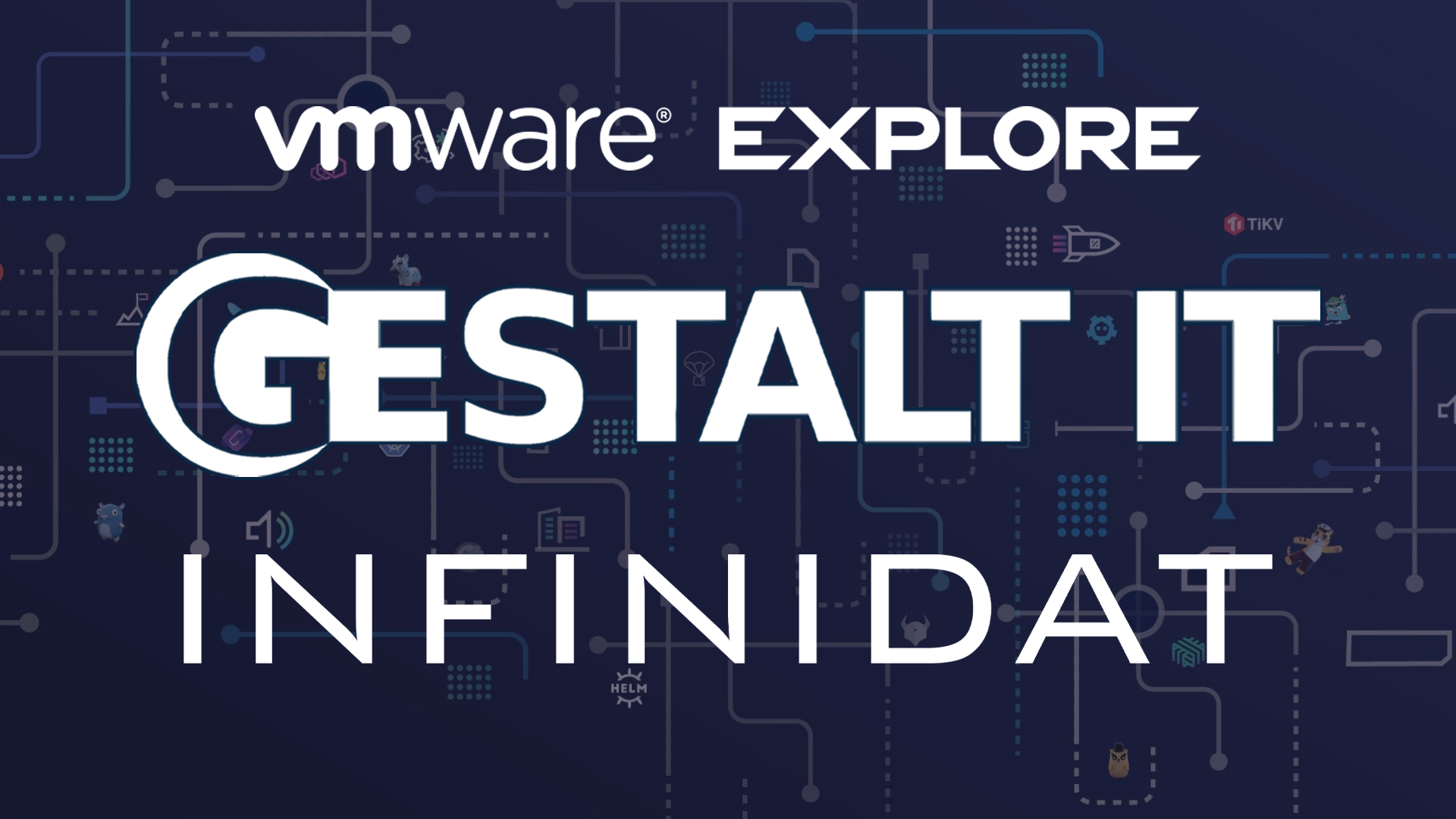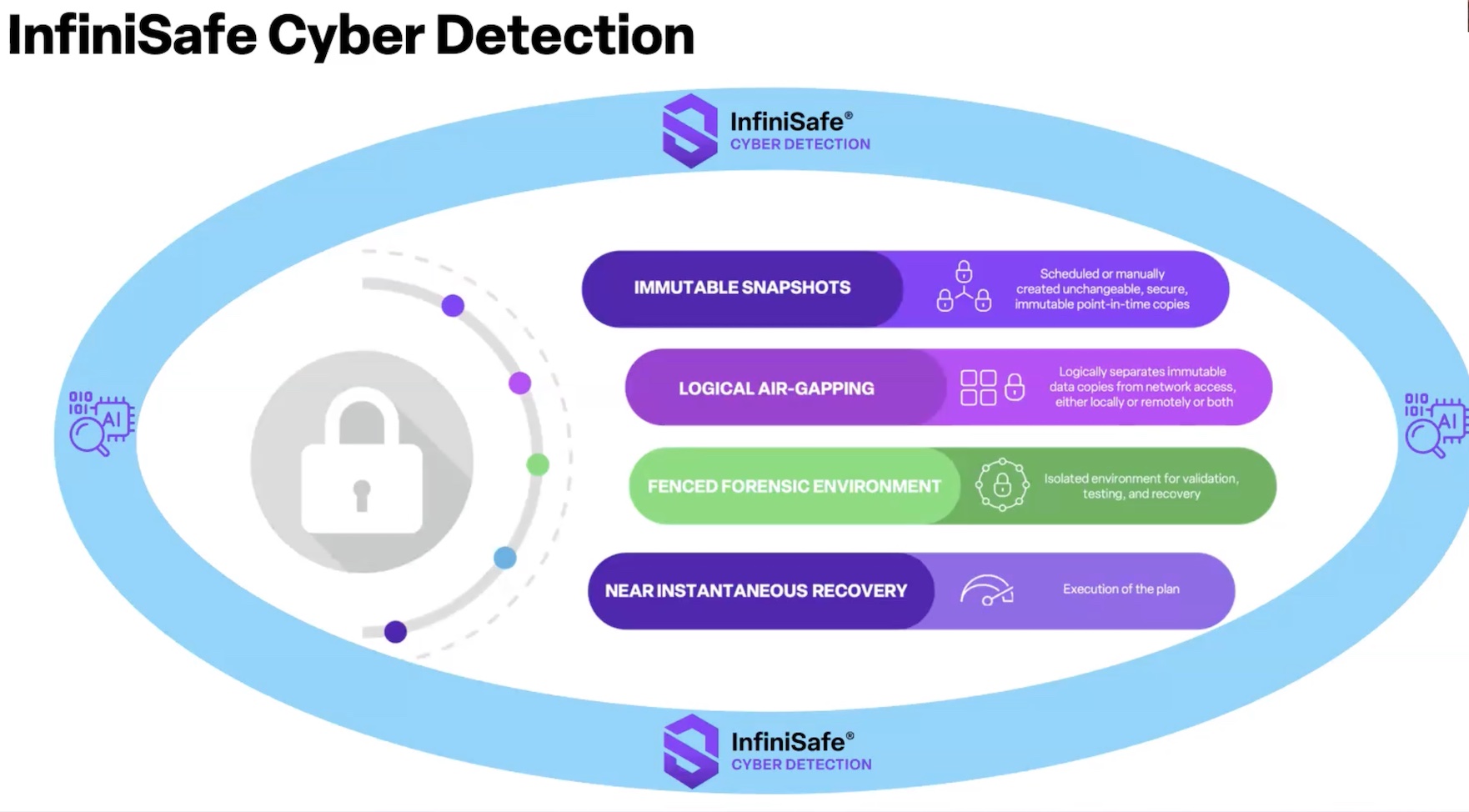Today is a special day for INFINIDAT. They are announcing four important new products, markedly expanding their portfolio with their new additions. INFINIDAT have been known for their award-winning primary storage solution, the InfiniBox. This announcement represents a major milestone: a portfolio expansion that will likely prove instrumental for the further growth of INFINIDAT’s business, revenue and market share.
Here are the four major announcements:
- InfiniBox F6212, representing a 50% capacity increase to InfiniBox systems (8+PB per 42U rack)
- InfiniSync – synchronous mirroring with Zero RPO and no distance limitations
- InfiniGuard – petabyte scale data protection solution with lightning fast recovery
- Neutrix Cloud – an INFINIDAT-operated sovereign cloud service with real time competition between AWS, Azure and Google Cloud
Before we jump into the core of these announcements (which we’ll cover throughout this Tech Talk series), it is important to understand where INFINIDAT is coming from, and what are the technological pillars that enable these announcements. I have written in the past about InfiniBox, but we should look in detail at each of the technologies that make these announcements possible.
InfiniRAID
InfiniRAID is a proprietary RAID implementation developed by INFINIDAT which focuses on uncompromised data protection and speed. It uses a 14+2 data storage schema where the each of the physical disks are sliced into smaller sections called data sections, and two additional parity sections used for parity. Each of the data sections have a data integrity field and a lost-write protection field to avoid logical corruption and disk level errors on top of the parity sections.
Data writes are first aggregated into a logical RAID stripe that is composed of 14 data sections and 2 parity sections. These sections are then written to 16 different disks in the system to decrease failure impact, while making sure the data is evenly distributed across the system (without “hot spot” zones with a higher data concentration). This implementation speeds up double-failure RAID rebuilds and allows the entire system to operate without any physical hot spare drives (thanks to the write layout used by InfiniRAID).
In case of double drive failure, InfiniRAID immediately calculates which data stripes are affected and initiates rebuild activities (by targeting the riskiest RAID groups first) that take considerably less time than usual thanks to the chunking of all drives in data sections, which ensures the data is read from all drives at the same time.
InfiniSnap
InfiniBox systems come out of the box with INFINIDAT’s patented non-locking snapshot technology, InfiniSnap. It has been built with the imperative of operating at petabyte scale, in Enterprise environments, and with no performance compromises.
These performance, efficiency and scalability imperatives are fulfilled with the use of a Tree data structure (the same as Google uses for their search engine) to implement a highly efficient mechanism. This structure allows users to snapshot any production data at any time with zero performance and I/O impact during snapshot operations, on any workloads. Individuals who have experience with how regular snapshots work on virtualized workloads will understand how important this is.
InfiniSnap-powered snapshots are thin (which means almost no capacity overhead) and can be created without any performance impact (with up to dozens of snapshots per seconds without any impact). This feature was built with enterprise-class scalability in mind, and thus each InfiniBox system can support up to 100,000 snapshots.
InfiniSnap, which is already leveraged by INFINIDAT ecosystem partners, is also a key enabler for the InfiniSync and InfiniGuard portfolio announcements: only a fast, lightweight and nondisruptive snapshot technology can enable such features.
Neural Cache
Neural Cache is INFINIDAT’s implementation of a read/write caching system that is backed by a machine learning algorithm which analyzes read/write patterns and learns gradually how to improve data caching operations. Any writes coming to an INFINIDAT array are stored in DRAM without any pre-processing (deduplication, compression, etc.) and a secondary copy of the data is also written on another node’s DRAM via low-latency InfiniBand connectivity. DRAM has a much lower latency than flash media, which allows INFINIDAT arrays to acknowledge write operations at unprecedented speeds.
Because a single pool of DRAM is used, Neural Cache has a better visibility than a dual-controller architecture, where the memory pool would be split per controller. Thanks to this, larger write bursts are accepted. This enables the Neural Cache machine learning engine to take smart decisions about which data blocks are hot and should remain in DRAM, and which should be destaged instead.
Data reads are also accelerated by Neural Cache. The previously explained concept of keeping hot blocks in DRAM ensures that any reads hitting the DRAM cache are processed with speeds that are orders of magnitude faster than reading from flash cache. DRAM latency is in the tenths of nanoseconds range, while the fastest Flash media (using Intel 3D XPoint technology such as Intel Optane) offer latencies in the tenths of microseconds. This gives DRAM a clear advantage as access times are three orders of magnitude faster than flash, and the use of BBU’s (Battery Backup Units) in InfiniBox systems ensures that data cached in DRAM is properly written to permanent storage in a timely fashion in case of a power failure.
Performance Improvements
INFINIDAT’s path to growth and adoption is regularly marked with milestones about significant performance improvements. Since their first customer shipment in 2013, not a year has passed without the introduction of dramatic performance improvements, which greatly benefit their customer base. Usually, customers do not get a chance to buy a storage system with a given performance rating and expect it to see year-on-year double-digit performance increase during the entire system lifecycle. The general (and optimistic) expectation is that the system will be able to sustain the advertised read and write IOPS across its lifecycle.
Thanks to a constant focus on innovation and code improvement, INFINIDAT’s software-based storage system has delivered beyond customer’s expectations. For example, a customer that purchased an InfiniBox system rated at 350K IOPS in 2013 benefited from a 57% IOPS improvement in 2014, followed by a subsequent 60% IOPS improvement and 25% write latency improvement in 2015. In 2016, that same customer benefited from an additional 25% IOPS improvement and the introduction of inline compression without latency impact. In 2017, that customer enjoyed an additional 30% write latency improvement and 10% read latency improvement.
Beyond performance improvements, additional features were also added to the base microcode, such as QoS, TreeQ, Synchronous replication for Fibre Channel and Asynchronous replication in NAS mode, and more are likely to follow. These performance improvements are not the result of hardware upgrades, no one swapped in faster media. They are solely software improvements embedded in microcode updates, which are regularly distributed to customers with valid support contracts.
For enterprise customers, it is crucial to know that their investment and trust into a storage array manufacturer is not just about buying a product with “good enough” features, but about investing into a partner that fosters a culture of innovation and constant improvement which increases the ROI for the consuming organization.
Conclusion
We’ve covered the technological foundations that enable INFINIDAT’s accomplishment of offering cost-effective, enterprise-class high density storage at higher than NVMe speeds with 7-nines avaibility and zero compromises on performance:
- INFINIDAT’s innovative three-tier architecture (combining DRAM, Flash storage, and HDD) is coupled with Neural Cache, an AI/ML enabled caching technology, for optimal data caching at even lower latency and faster write/read speed than storage-class memory devices
- From a data resiliency perspective, InfiniRAID, a robust patented data layout structure, ensures that rebuilds happen in the fastest and safest way possible, even if two hot spare drives are lost
- InfiniSnap is petabyte-scale, massively scalable zero-performance impact snapshot solution that constitutes the foundation of INFINIDAT’s announced zero-RPO, any-distance data replication (InfiniSync) and data recovery (InfiniGuard) technologies
- Incremental performance improvement across the entire platform lifecycle is baked directly into INFINIDAT’s DNA via R&D / software development. This is delivered consistently to INFINIDAT customers with valid support at no additional cost
Thanks to carefully designed core technologies, INFINIDAT has laid stable technological foundations that enable the expansion of built-in InfiniBox capabilities, enable the growth of their offering portfolio and uses cases, which provides additional positive arguments for INFINIDAT adoption during the selling lifecycle. These strategic decisions are very likely to turn into a virtuous development circle for INFINIDAT where growth and adoption will fund more technological innovation and further sustain the sales cycle.
Stay tuned for our next posts in the coming weeks, as we go into further technical detail on the InfiniSync, InfiniGuard, and Neutrix Cloud announcements!




